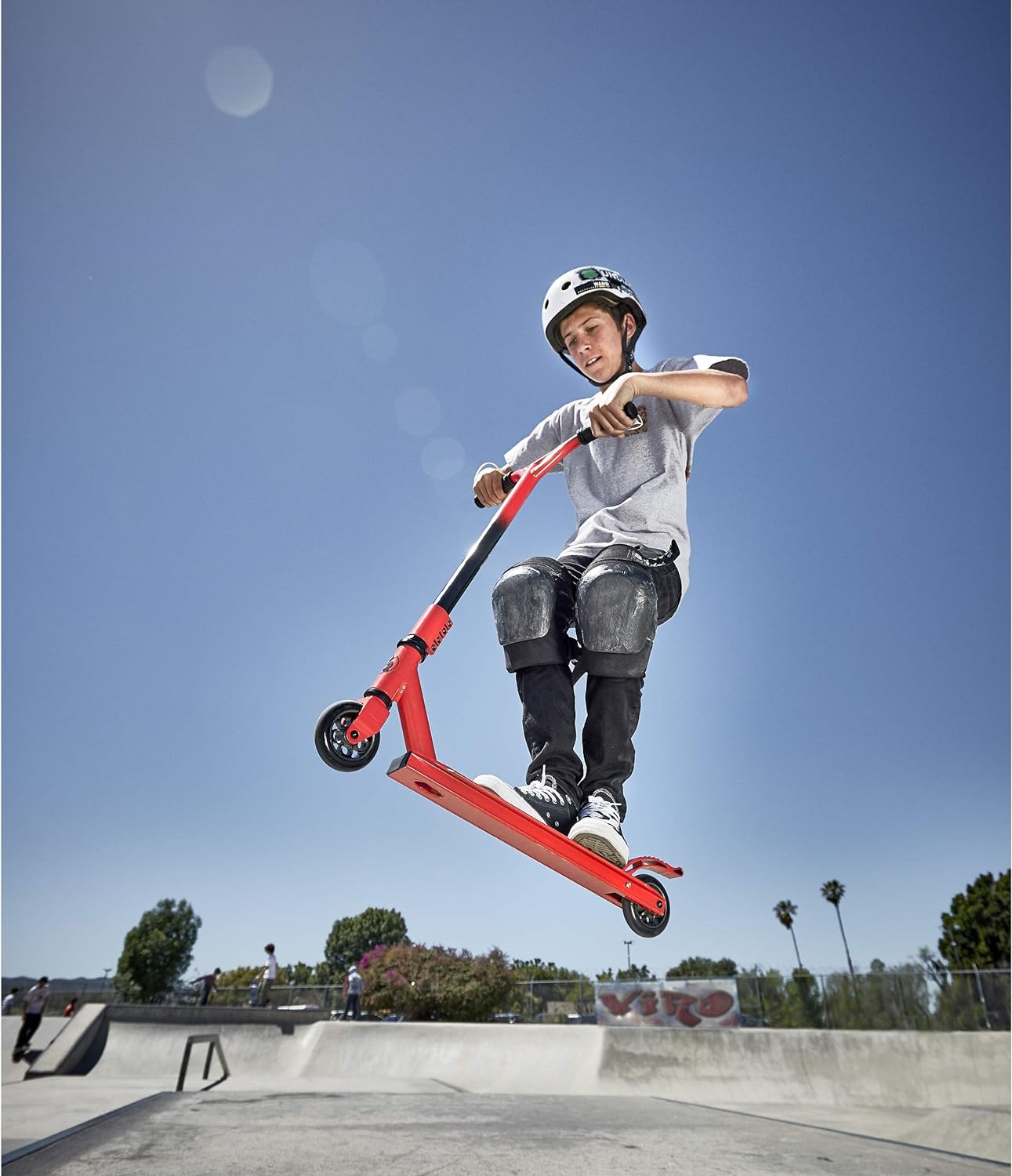
Title: Scooter Tricks: Precautions and Practices
Scooter tricks can add excitement and challenge to your child's riding experience, but they also come with risks. It is important to prioritize safety and proper technique to prevent accidents and injuries when learning new movements. In this guide, we'll discuss safety precautions and practice techniques to help your child perform scooter tricks safely.
-
Wear protective equipment:
- Before trying any tricks, make sure your child is wearing proper safety gear, including a helmet, elbow pads, knee pads, and closed-toe shoes.
- Safety gear helps reduce the risk of injury from falls and collisions by providing adequate cushioning and protection to vulnerable areas of the body.
-
Start with basic skills:
- Start by mastering basic scooter riding skills before attempting stunts.
- Make sure your child can confidently ride, balance, and control the scooter at a variety of speeds and surfaces before moving on to more advanced maneuvers.
-
Choose the correct place:
- Choose a safe and suitable place to practice your scooter tricks, such as a flat surface with plenty of open space.
- Avoid crowded areas, streets, or uneven terrain that may increase the risk of accidents or collisions with obstacles.
-
Warm-up and stretching:
- Suggest that your child warm up before performing scooter tricks to prepare their muscles and joints for the physical activity.
- Perform dynamic stretches such as leg swings, arm circles, and torso twists to increase flexibility and mobility.
-
Learn proper technique:
- Teach your child the proper technique for performing each trick, focusing on proper body position, balance and timing.
- Break the movement into smaller steps and demonstrate each step slowly and clearly before performing the entire trick.
- Emphasize the importance of using controlled movements and maintaining balance throughout the trick.
-
Practice progressions:
- Gradually progress from simple tricks to more complex ones, mastering each skill before moving on to the next.
- Start with basic tricks such as bunny hops, guides and cartwheels, then move on to more advanced maneuvers such as tail flicks, bar spins and honeysuckle.
- Practice each trick several times until your child feels comfortable and confident doing it consistently.
-
Identification and surveillance:
- Provide supervision and guidance while your child is practicing tricks on the scooter, especially when performing new or difficult tricks.
- Pay attention to your child by standing nearby and offering support or assistance as needed, ready to intervene in the event of a fall or accident.
-
Know when to stop:
- Encourage your child to listen to their body and know when to take a break or stop an activity if they feel tired, sore, or frustrated.
- Avoid going overboard and trying tricks that seem unsafe or uncomfortable.
-
Stay Focused:
- Remind your child to stay focused while performing scooter tricks, avoiding distractions or reckless behavior.
- Encourage awareness and awareness of their surroundings, including other drivers, pedestrians, and potential hazards.
-
Celebrate progress and achievements:
- Celebrate your child's progress as he learns new scooter tricks by recognizing his hard work, dedication and perseverance.
- Praise and encourage them to increase their self-confidence and motivation to continue to improve and challenge themselves.
By following these precautions and practicing technique, your child can perform tricks on the scooter safely and responsibly, learning new skills and expanding their capabilities while minimizing the risk of accidents and injuries. Encourage open communication about safety, set realistic goals, and provide ongoing support as your child explores the exciting world of scootering.






